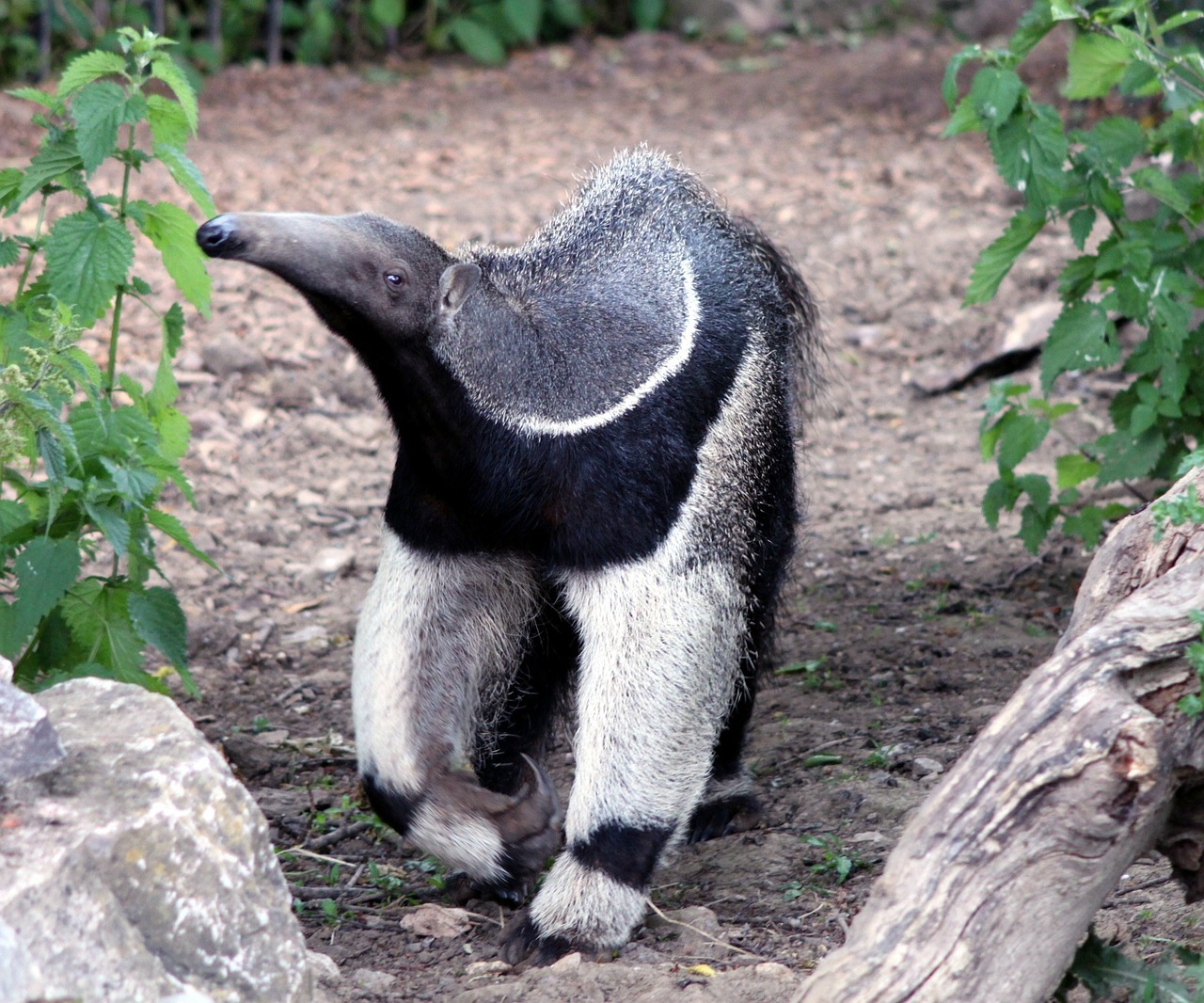Scientific classification: Anteaters make up the family Myrmecophagidae. The giant anteater is classified as Myrmecophaga tridactyla.
Introduction
Anteaters is the usual name for any of the four insect-eating mammals of Mexico, Central America, and South America, having a long head with a long, tubular mouth and long tongue, but no teeth. The giant anteater, weighing up to 39 kg (86 lb), is the largest species of anteater. It lives in forests and swampy areas and on open plains and is mainly diurnal in areas where there are few people, and is nocturnal in densely populated areas. The coarse coat is gray, with a white-bordered black stripe on each shoulder spiny anteater, and the tail is long and bushy. The front claws, used to tear open termite mounds and for defense, are so long that they are tucked under, and the animal walks on its knuckles. The long tongue flicks rapidly in and out of the small mouth opening, scooping up termites or other insects on its sticky surface.
Different species of anteaters
The pygmy anteater is the smallest species of anteater, ranging from 32 to 52 cm (13 to 20 in). It is covered with golden-brown fur. Its jaws curve to form a short tube, and it eats termites and other insects. Mainly arboreal, it has a prehensile tail. The two species of lesser anteaters are the size of a large domestic cat and have short, coarse, tan to blackish hair, spiny anteater usually with a black band around body and neck. They also live in trees but frequently come down to the ground. Both the pygmy and the lesser anteaters are predominantly nocturnal and walk on the sides of their front feet because of the length of their claws.
All three species are characterized by solitary habits and a low reproductive rate. The female carries the single young on her back during its growth; in the case of the giant anteater, this can last almost one year. Other, unrelated mammals called anteaters are the aardvark, echidna, pangolin, and numbat, or banded anteater, a marsupial.Example of two species of anteaters.
- Pangolin
Pangolin, also called scaly anteater, any of seven species of mammals characterized by a body covering of pointed overlapping scales instead of fur. Pangolins are native to China, India, Malaysia, Indonesia, and Africa.
The pangolin has a long body, tapered head, and thick prehensile (grasping) tail. Sharp rakelike front spiny anteater claws are used to gather food and dig burrows. The scales are yellowish to dark brown in color. They are made from fused hair and attach to the skin at their bases. Scales are absent from the underbelly, which is sparsely covered with hair.
- Numbat
Numbat or Banded Anteater, squirrel-sized marsupial with a long, sticky tongue, which it uses to lick up ants and termites. Unlike most marsupials, numbats are diurnal that is, spiny anteater they are active during the day rather than at night and females do not have abdominal pouches.
Numbats once inhabited large portions of the Australian continent, but today are confined to southwestern Australia. Their preferred habitat is eucalyptus forests, where termites often thrive. One variety, or subspecies, lives in deserts.

